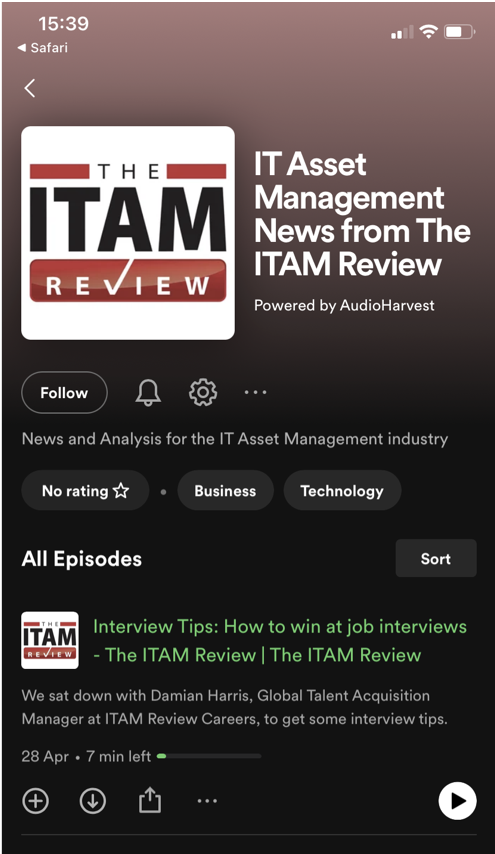Text-to-speech for publishers
Introduction
Text-to-speech (TTS) technology allows publishers to automatically convert written text into audio experiences. This can be useful for creating audio versions of written content, such as news, articles, reviews, etc. It is also a highly cost-effective way for publishers to grow their audience by sharing audio content across podcast platforms such as Spotify and iTunes. In addition, publishers can place an audio player onsite so that visitors can listen to publisher content online. The value to publishers is that enables them to monetise their content through selling subscriptions and advertising against the audio content.
Text to speech services
There are a number of TTS different tools and services available for publishers to deploy. The key types are of services are as follows
Online TTS tools:
There are also a number of online TTS systems that enable users to convert text into speech directly from a web browser. Some popular online TTS tools such as Google Text-to-Speech.
TTS APIs:
Many companies offer TTS APIs (Application Programming Interfaces) that allow developers to integrate TTS functionality into their own applications or websites. Some popular TTS APIs include Amazon Polly and IBM Watson Text to Speech.
TTS creation and distribution platforms
These platforms enable publishers to convert to audio and then distribute this as a branded podcast across platforms such as Spotify, iTunes, etc. For instance, this is a service that AudioHarvest provides.
Use Cases
Publishers can use TTS technology to create audio versions of digital content for a variety of purposes. Such as creating podcasts, providing audio versions of articles for people with visual impairments, and sharing their audio content across social platforms.
This enables publishers to then monetise this content by placing audio ads around the content. Publishers also find that this is a highly cost-effective way to distribute their content and acquire new listeners as they are simply using technology to convert and distribute existing content as audio. This is particularly cost-effective when using an end-to-end platform such as AudioHarvest.
There are many potential use cases for text-to-speech (TTS) technology for publishers. Here are a few examples:
Audio versions of written content:
Publishers can use TTS to create audio versions of digital content, such as news, articles, reviews, etc. This can be useful for people who prefer to listen to content rather than read it or who are on the move where listening to content is easier than reading it. Or for people with visual impairments who may have difficulty reading text.
Podcasts:
TTS can be used to create podcasts from digital content, such as articles, news, or reviews. This can allow publishers to reach a wider audience and provide an additional way for audiences to consume their content.
Accessibility:
TTS can be used to make written content more accessible to people with visual impairments. For example, publishers can use TTS to provide audio versions of articles, news or reviews. It can also be used to create audio descriptions of images or videos.
Language translation:
TTS can be used alongside language translation tools to create audio versions of digital content in different languages. This can enable publishers to reach a global audience and provide published content in multiple languages.

How to monetise audio content
There are a number of ways that publishers can monetise audio content. Here are a few options:
Subscription model:
Publishers can offer audio content on a subscription basis, where users pay a fee to access a library of audio content. This can be a good option for publishers who have a large volume of audio content.
Pay-per-download:
Publishers can also monetize audio content by offering individual audio files for purchase. This can be a good option for publishers who have a smaller volume of audio content or for content that is in high demand.
Advertising:
Publishers can monetize audio content by including advertisements within the audio content. This can be a good option for publishers who have a large audience and can attract advertisers.
Sponsorship:
Publishers can also monetize audio content by securing sponsorships from companies or organizations. This can involve the sponsor providing financial support in exchange for branding or promotional opportunities within the audio content.
Publishers can also consider offering a combination of these monetization strategies to generate revenue from the audio content.
Growing a publishers audience through audio content
Audio content can be a useful customer acquisition tool for publishers in a number of ways. Here are a few examples:
Providing value:
By offering audio content, publishers can provide value to potential customers by giving them the option to consume content in a different format. This can be particularly appealing to people who prefer to listen to content rather than read it.
Reaching a wider audience:
Audio content can also allow publishers to reach a wider audience, including people who may have difficulty reading text or who prefer to consume content on the go. This can help to increase the visibility and reach of the publisher’s content.
Improving accessibility:
Audio content can also improve the accessibility of the publisher’s content for people with visual impairments or other disabilities. This can help to make the publisher’s content more inclusive and increase the number of potential customers.
Increasing engagement:
Audio content can also help to increase engagement with the publisher’s content. For example, people may be more likely to listen to an audio version of an article if they are commuting or working out, and this can help to increase the amount of time they spend interacting with the publisher’s content.
Overall, offering audio content can be a useful way for publishers to attract and retain customers by providing value and increasing the accessibility and engagement of their content.
Publisher Use Case – The ITAM Review
Leveraging the power of audio to inform, engage and grow ITAM’s audience
The Challenge
• Grow audience
• Monetise content across audio
• Increase onsite dwell time and engagement
THE SOLUTION
ITAM Review adopted AudioHarvest’s real-time audio creation and distribution platform in order to establish and engage a new audience across podcasts, the web, and social platforms
- The AudioHarvest platform scanned The ITAM Review website for suitable sections / articles
- Established that the news and market guides articles within The ITAM Review website would work really well as audio experiences
- The Harvester platform then captured these articles in realtime, transformed them into audio files and distributed these as a ITAM branded podcast and on the client’s site via AudioHarvest’s onsite audio player
- The Harvester platform distributed the branded podcast across key audience platforms such as Spotify, iTunes, Google, LinkedIn Amazon, etc.

“‘SO EASY TO SETUP AS THE TECHNOLOGY SIMPLY CONVERTS OUR ARTICLES INTO AUDIO CONTENT IN REALTIME. WE ARE PLEASED WITH THE SERVICE”
AJ WITT – INDUSTRY ANALYST – THE ITAM REVIEW
The Result
- Established The ITAM Review as a leading audio publisher in the technology sector
- Engaged and inspired their core audience with topical and relevant podcast episodes on the technology sector
- Established an always-on automated audio marketing channel that reaches a high volume of their target audience
- Reached a new audience of listeners and increased onsite engagement through audiofying The ITAM Review website
To listen to the ITAM branded podcast simply click here or visit the website here to listen to an article read out here
To find out how AudioHarvest enables publishers to create always-on audio marketing activity quickly and easily test out the service for free here
More use-cases
Product use-case
Text to Speech – Use Cases
Product use-case
Audio Marketing – Start Ups
Product use-case
